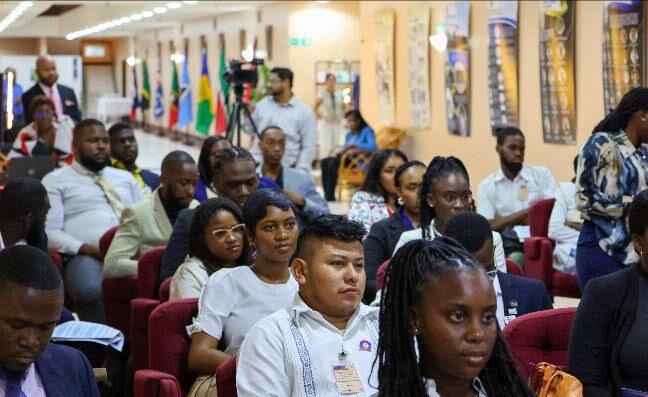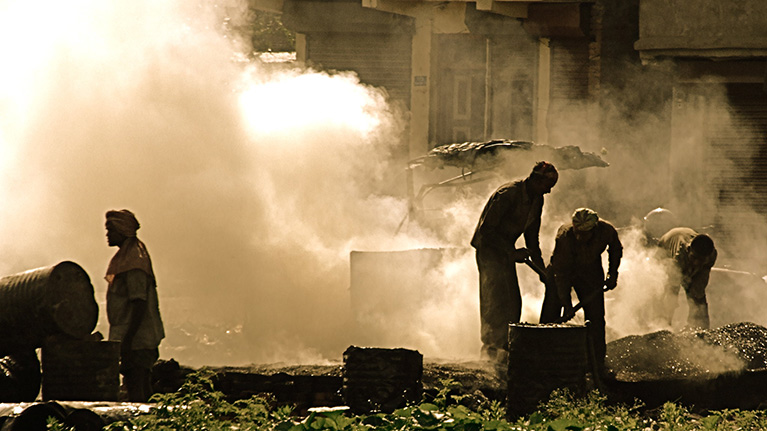The Caribbean Community (CARICOM) has emphasized to the United Nations Economic and Social Council (ECOSOC) that it was unaffordable and increases indebtedness, when Member States borrow funds at market rates to meet post-disaster recovery and reconstruction costs.
Assistant Secretary-General (ASG) for Foreign and Community Relations, Ambassador Colin Granderson expressed this concern in an recent address on behalf of CARICOM Secretary-General Ambassador, Irwin LaRocque, at a Special Meeting of the ECOSOC. The Meeting was held at the UN Headquarters in New York in keeping with the theme: Pathways to resilience in climate-affected states: Forward-Looking Resilience Building Agenda – Promises, Results and Next Steps.
“High indebtedness and burdensome repayment costs,” he told the UN Council, “leave little fiscal space to build climate resilient infrastructure and to address climate change mitigation and adaptation.”
“Coverage levels of the Caribbean Catastrophe Risk Insurance Facility are constrained primarily by the amount of coverage a Member State deems to be affordable. At the moment it is 2.5 percent instead of the 25 percent advocated,” he added, noting the need was urgent for “innovative financial instruments and more open-minded policy approaches.”
The approaches could include, he stated, using vulnerability as an additional criterion for accessing concessional financing; a condition for which the Community has long advocated.
Classifying debt resulting from recovery, reconstruction and building resilience under a non-debt rubric; building capacity to navigate the complexities of accessing climate funds; the creation of fiscal space through debt relief; the conversion of bilateral and multilateral debt into special funds to address natural disasters and economic shocks; and the production of new insurance products as well as higher levels of coverage for government exposure were among the other measures he suggested to the UN Economic and Social Council.
The ASG outlined the strategies CARICOM had adopted to realize the goal of resilience and acknowledged that investing in preparedness for natural disasters and climate change, was a key step in establishing resilience and reducing the resulting high economic and human cost.
However, he reiterated that Caribbean Small Island Developing States faced a number of “insurmountable impediments” to financing resilience including graduation and middle Income categorization, which deny them access to low cost development and concessional financing despite their high levels of vulnerability.
“The Caribbean is one of the world’s most vulnerable and disaster prone regions. Susceptible to natural disasters, primarily hurricanes, now exacerbated by climate change, very few countries have escaped serious disaster-related damage within the past two decades. Approximately three-quarters of the population live in at-risk areas, and one-third live in areas highly exposed to hazards including sea-level rise,” Ambassador Granderson told the UN Council.
This existential vulnerability means, he said, that “scarce resources earmarked for development programmes and projects have to be diverted to relief and reconstruction following disasters.”
“The related expenditure can sometimes reach much higher than the affected State’s Gross Domestic Product (GDP) and is a major factor in driving up the region’s high level of debt. Losses of individual Member States have exceeded 100 percent of GDP in many instances as demonstrated by Hurricane Ivan (Grenada, 2004), the Haiti earthquake (2010). Dominica lost 226 percent of GDP following the passage of Maria last year. Ninety-five percent of its building stock was damaged as was the case in Barbuda, and some 75-80 percent in the British Virgin Islands,” he added.
In keeping with the goal to build a resilient Caribbean Community, Ambassador Granderson said CARICOM has been giving thought to the establishment of a Resilient Caribbean Recovery Facility.
The experiences occasioned by catastrophic natural disasters in the distant and recent pasts, have exposed the need to revamp existing emergency management protocols, to draft new ones and to address key issues associated with evacuation, telecommunications, air and sea-port management and the provision of building materials, he stated.
With the assistance of UNDP, he said the Community is projecting that the Resilient Caribbean Recovery Facility would be “a sort of one-stop-shop for the provision of skilled building professionals, technical expertise and best practices to help the planning and the implementation of recovery and resilience building.”
He noted that the Caribbean Community Member States will continue their advocacy vis-a-vis the Organization for Economic Cooperation in Development (OECD), the International Financial Institutions (IFIs) and their development partners calling for strong collaborative action in addressing the challenges of financing resilience, climate financing and the sustainable development of SIDS taking greater account of their peculiarities and vulnerabilities.
“The welfare of the people of the Community demand no less,” Ambassador Granderson told the UN Meeting.




